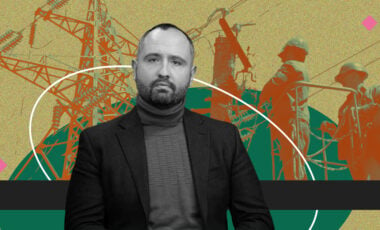Ukrainians begin using Internet more, with 80% online every day, social survey finds

The share of people who use the Internet every day in Ukraine has increased by 8% over the year, according to the results of a KIIS survey conducted with the support of UNDP and Sweden.
The number of Ukrainians who use the Internet daily has increased from 72% to 80% over the past year, and since 2021, the indicator has risen by a total of more than 10%.
Another 11% of Ukrainians used the Internet infrequently in 2023 – two to three hours a week or less – while another 9% did not use the Internet at all. However, over two years (2021-2023), the share of the latter has dropped by 5%.
The figures come from a Ukrainian national survey conducted by the Kyiv International Institute of Sociology (KIIS) in 2023 at the request of the United Nations Development Programme (UNDP) in Ukraine. The survey was conducted with support from Sweden, and in partnership with the Ministry of Digital Transformation of Ukraine. These international partners annually analyse the level of use of electronic services and the Internet by Ukrainians.
Ukraine continues to have a high level of use of public electronic services, with 64% of respondents saying that they had used government electronic services over the last year. On average, Ukrainians use three public digital services per year – an increase compared to last year, when the average was two.
The most popular government services web resource among Ukrainians is Diia. Over three years, the level of use of the Diia portal and application increased from 13% in 2020 to 51% as of the beginning of October 2023.
The absolute majority of respondents (almost 80%) who used government electronic services rate their experience as rather or very positive.
Valeriia Tkach, Deputy Director of the Department for the Electronic Services Development at the Ministry of Digital Transformation of Ukraine said that the results of the survey show the work of the ministry and its partners is bearing fruit.
"This year's study showed that the level of use of state electronic services is consistently high, Ukrainians on average are using more digital services, and the majority of users rate their experience positively." Tkach said. "This shows that citizens consider electronic services useful and important in an increasing number of spheres of life, and that the efforts of the ministry to digitize the public sector are yielding results."
Anton Hrushetskyi, Executive Director of the Kyiv International Institute of Sociology, said there is still a noticeable "gap" in the use of state electronic services among different age categories. "This trend can be traced throughout all the years of the study," Hrushetskyi said.
Thus, 89% of respondents aged 18-29 used at least one service in 2023, while only 30% of people aged 70 or over did so, he said. In addition, last year, public e-services were used more often by men with higher education and with a high level of wealth.
The study showed that older people are the least likely to use both public digital services (35%) and the Internet (50% do so daily, while 30% do not use them at all). At the same time, daily Internet use is growing fast in this age category – it increased to 50% last year, compared to 32% in 2022.
The three main reasons why people did not use government electronic services during the year are unchanged in all the annual surveys. They are a lack of need (69% among those who did not use e-services during the year), a lack of skills (27%), and a lack of a device with Internet access (19%).
At the same time, the share of people for whom the lack of sufficient digital skills was the reason for not using e-services has significantly decreased – it was named by 20% fewer respondents compared to 2022 (when it was 47%).
Volodymyr Brusilovskyi, the manager of UNDP's DIA Support project, said this was a positive trend.
"This is clear evidence that the level of digital literacy in the country is growing, and Ukrainians have more opportunities to learn how to use smartphones and the Internet," Brusilovskyi said. "We're happy to see these results, as the promotion of digital literacy is one of the key areas in which UNDP, with the support of Sweden, has been working closely with the Ministry of Digital Transformation over the past years. We will continue this work so that even more Ukrainians have quick access to government e-services and information."
This year, as part of the research, in-depth interviews on the use of e-services among veterans were conducted for the first time, Brusilovskyi added.
"This will allow us to better explore the experiences, beliefs, fears, or barriers that veterans face when using government e-services," he said. "In this way, we will be able to quickly solve possible problems so that nothing prevents veterans from receiving the services they need from the state."
The All-Ukrainian survey was conducted in September-October 2023 among adult residents of Ukraine aged 18 and over, who lived in territories controlled by the Government of Ukraine as of 23 February 2022, using computer-assisted telephone interviews. In total, 2,014 interviews were conducted.
This is the fourth study on the use of electronic services and the Internet in Ukraine. Previously, KIIS conducted similar surveys commissioned by UNDP in 2020, 2021 and 2022.




















































